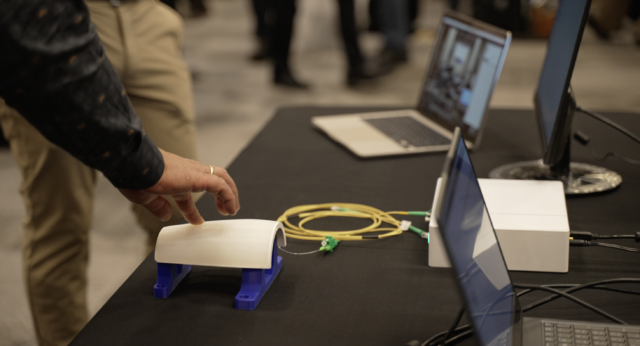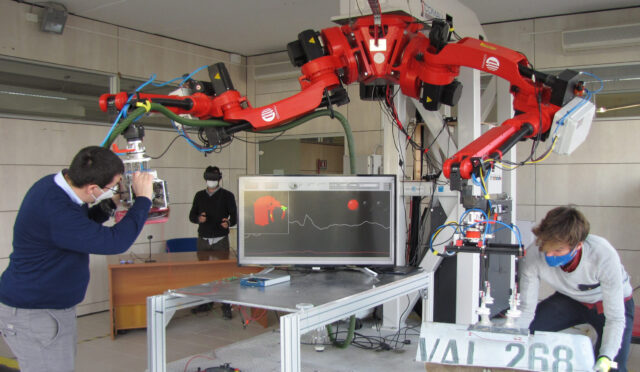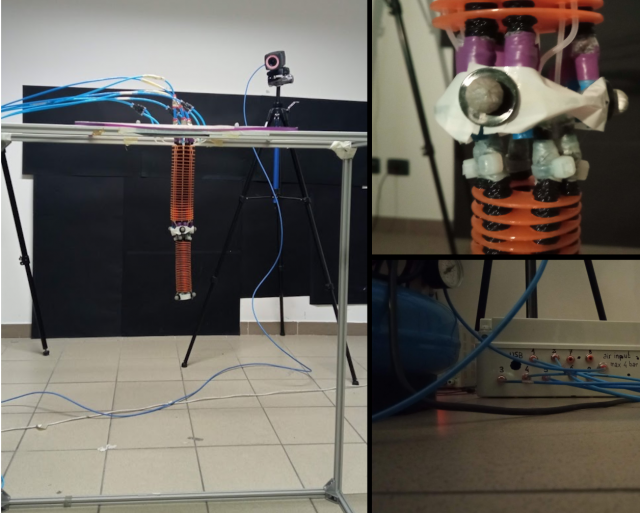HomeRobotic Database - Robotic platform | TERRINet
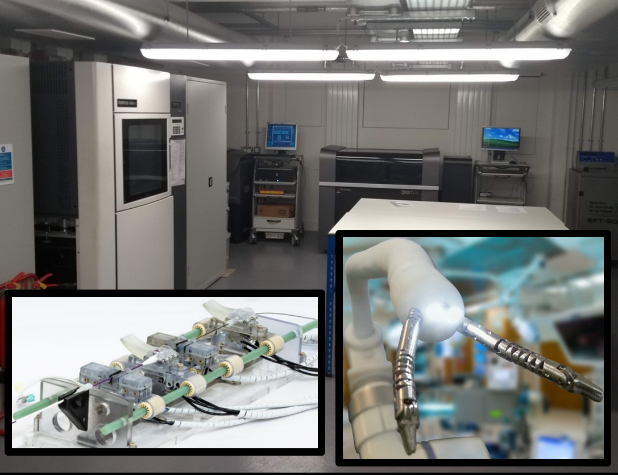
Robotic Fast Prototyping Platform
The robotic fast prototyping platform is a collection of industrial size 3D printing devices and a precision workshop dedicated to the design, fabrication and assembly of robot and medical robots. The fabrication centre comprises several 3D printer with large building volume. The printers are several polyjet printers, FDM printer, SLS metal printer. An electronic lab equipped with pick and place PCB machine allows for large scale fabrication of electronics board. A state of the art workshop and precision manufacturing tool is also available with a micro EDM and 5 axis milling machine. A Clean Room assembly space allows for an assembly complying with medical grade devices. The characterisation platform assure the conformity of the final prototyped both mechanically and electrically in semi-production scale.
Key features:
- Polymer and Metal 3d printing
- Large scale electronic assembly and testing
- Clean room for medical grade assembly
Possible applications:
- Robotic fabrication and prototyping
- Zero assembly mechanism manufacture
- Multi material fabrication
- Test rig manufacture
- Prototype manufacture
Technical specifications
| 3D Printer: | Object Connex 250, Oject 500, Fortus 400mc, Concept Laser |
| Fabrication: | Sari Micro EDM, Daltron C5 |
| Characterisation: | Carl Zeiss O-Inspect 322, Tester SPEA 4020 Flying Probe, Skycan Brucker Micro CT |
Access information
| Corresponding infrastructure | Imperial College London The Hamlyn Centre |
| Location | Bessemer Building, Kensington, |
| Unit of access | Working day |
Access history
RASIS - Precision characterization of a micro-surgery robotic platform.
Dr.-Ing. M. Ali Nasseri, Krassimir Ovcharov
Characterization of positioning accuracy both in component space and Cartesian space is playing an important role in validating the precision of micro manipulation systems. Micro robots, designed for medical and surgical applications, are one of the most critical micromanipulation systems with specific precision requirements. Since 2011 we are developing a hybrid parallel-serial micromanipulation system for assisting surgeons to perform micron scale operations such as retinal surgery in ophthalmology. Now there is a need to perform precision assessment. Within this project we are planning to perform this assessment in two steps both for positions as well as forces.
The result of this experiments will be used for design and development of surgical robots for precision operations. Even though, the current application is in ophthalmology, the results are not limited to visual science but it can be also generalized to other medical and surgical fields where micron scale manipulation is needed. Clinical compatibility will be a main part of this work.
RoboFoot - Research of Friction Between Parts of 3D Printed Innovative Walking Robot
Tadeusz Mikolajczyk
Authors invented original bipedal walking robots (BWR) with rotate foot. Was presented two solution of real model of 3DOF BWR, and 4DOF BWR. These robots was build from parts made by 3D printing and driven by gears also printed. Friction process occurs in places of cooperation this mechanisms. Friction issues of elements made with 3D printing technique are of interest to scientists. In literature show research on tribological machine of 3D printed surfaces required tribological properties, such as friction coefficient and wear. Presented results show that 3D-prints parts from soft materials can indeed be used as fully functional driving wheels on a smooth surface, such as an aluminum rail, as well as in other applications where high friction is desirable. The purpose of the work is to learn about the impact of both 3D printing methods and materials on the friction conditions of real product on example of BWR.
The work carried out under the RoboFoot project enables the understanding of the technology 3D printed parts bon cooperation in BWR models. These models include both elements cooperating with a sliding motion (robot legs moving vertically) and gears for the drive of the legs or rotary feet. The developed structure may contain cooperating elements made with the FDM technique (e.g. ABS or PLA), such as plastic elements cooperating with metal surfaces. The layer manufacturing technique allows both the production of components for the assembly of devices and the production of devices composed of elements, in this case BWR models, which, after being equipped with drives and a control system, can be started. The quality of cooperation can be assessed through the evaluation of the drive energy indicators as well as model tests of the force and friction coefficient. The project will enable the development of technology for the implementation of BWR models. The results of the work carried out can be generalized and used in other applications.




